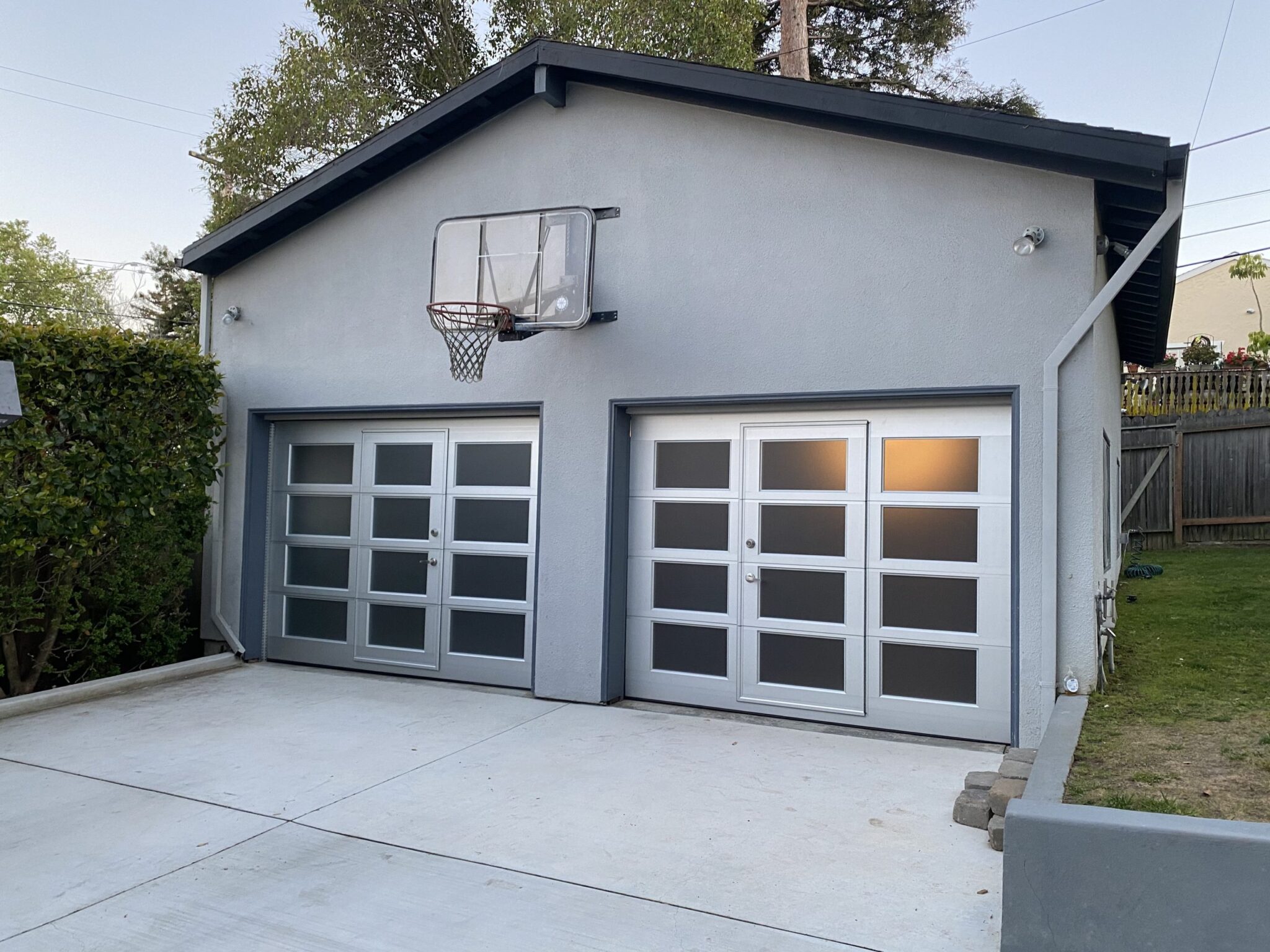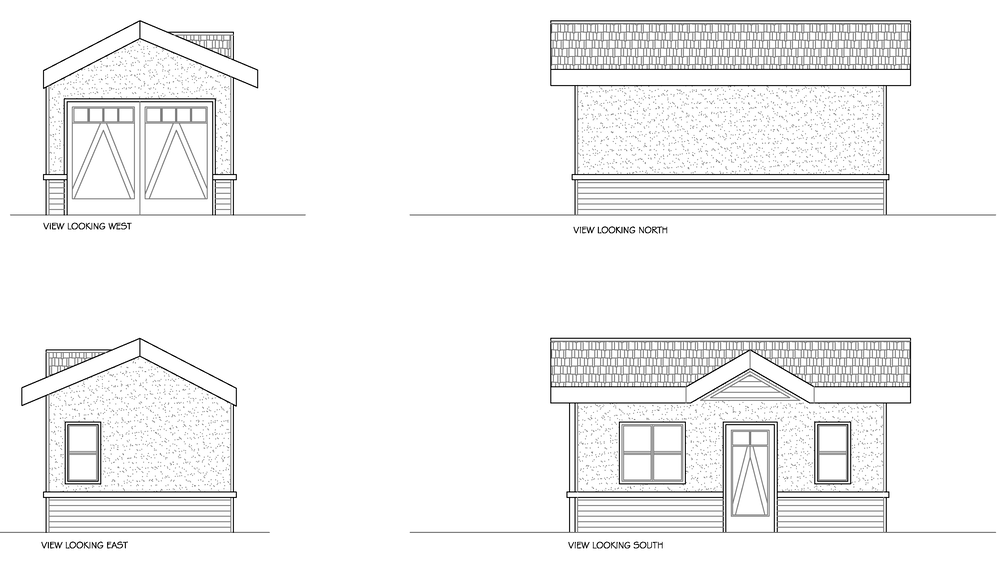
The hip roof garage plan is one of the most sought-after styles for garages. They provide great protection from the weather and add architectural lines to buildings. They can also be used to enhance the structure's overall appearance by providing generous overhangs.
The main benefit of hip roofing garages is their ability to withstand strong wind and hurricanes. These garages are often used in areas that have extreme weather conditions. Due to their strength, durability, and strength, they may be eligible for windstorm discounts.
Some garage plans include a hip-roof.
Modern Flat Roof Garage
These types of garages are typically two stories high and have a low slope. These garages can be used for small spaces and are extremely versatile.
Another type of flat roof garage is called the reverse-gable roof. These gables are triangular and face the sides of your structure, not the front. Miller Garages offers a wide range of custom garages that feature this reverse-gable design. They can be built to complement your home or other nearby structures.

Its ability to highlight the architecture of the home is what makes it so attractive. It is also a cost-effective way to build garages.
Garage Designs with Flex Space
These garage plans are designed to incorporate a variety of styles, including traditional, craftsman and European. They also have different rooflines and door combinations that can give the structure a special touch.
This garage design is also great for homeowners who wish to build their garage on an existing foundation. These garages often have a stairway on the second floor. This allows people to access their garage from different floors within their homes.
Some garage designs have a mudroom or foyer on the first floor. This can be helpful in keeping clutter off the second level.
An attached apartment could be a good idea if you plan to build a garage. These apartments can be either large or small depending on the individual's requirements.

They are a great option to maximize the space in your garage. You can use your garage as a bedroom, office, or playroom. It will also allow you to keep your living area open and airy.
These garages can accommodate up to 4 cars. These garages are more labor-intensive than traditional garages but still offer a great deal for many people.
These garages will also have a gable roofing which will give them an elegant and sophisticated appearance. These garages can be used to build a new home, or for remodeling.
Garage Plans and Hip House Plans
These hip roof house plans are perfect for adding an apartment above your garage. These plans are great options for any family looking for a spacious apartment above a garage.
FAQ
What are the included features in a full remodel of your kitchen?
A kitchen remodel includes more than a new faucet and sink. There are cabinets, countertops as well, lighting fixtures and flooring.
A full kitchen remodel allows homeowners to update their kitchens without having to do any major construction. This means that no demolition is required, making the project easier for both the homeowner and the contractor.
Renovating a kitchen can involve a range of services including plumbing, heating and cooling, painting, and even drywall installation. Complete kitchen remodeling may require multiple contractors, depending on how extensive the renovation is.
A team of professionals is the best way to ensure that a kitchen remodel runs smoothly. There are often many moving parts in a kitchen remodel, so small problems can cause delays. You should plan ahead and prepare a backup plan for any unexpected situations if you decide to DIY.
What is the average time it takes to remodel a bathroom.
It usually takes two weeks to remodel a bathroom. However, this varies greatly depending on the size of the project. Smaller jobs, such as adding a shower stall or installing a vanity, can be completed in a day or two. Larger jobs, like removing walls, installing tile floors and fitting plumbing fixtures, may take several days.
It is a good rule to allow for three days per room. This means that if there are four bathrooms, you will need 12 days.
What should I do about my cabinets?
It all depends on if you are thinking of selling or renting your home. If you intend to sell your home, you will likely need to remove and refinish cabinets. This gives buyers an impression of brand new cabinets, and it helps them imagine their kitchens after they move in.
But if your goal is to rent your house you will need to remove the cabinets. Many renters complain about the dishes that are dirty and the greasy fingerprints left by tenants.
To make the cabinets look better, you can paint them. Make sure to use high-quality primers and paints. Low-quality primers and paints can crack easily.
What are the biggest expenses in remodeling a kitchen?
There are a few important costs to consider when renovating a kitchen. These include demolition, design fees, permits, materials, contractors, etc. However, these costs are quite small when taken individually. However, when you combine them all, they quickly add-up to become very large.
Demolition is likely to be the most expensive. This includes removing the old cabinets, appliances, countertops, flooring, etc. The insulation and drywall must be removed. Finally, replace the items.
Next, an architect must be hired to create plans for the space. The permits will be required to ensure the project complies with building codes. You will then need to find someone to perform the actual construction.
The contractor must be paid once the job has been completed. Depending on the size of the job, you could spend between $20,000 to $50,000. This is why it's important to get estimates form multiple contractors before hiring one.
These costs can be avoided if you plan. You may be able get better material deals or to skip some of the work. You can save money and time if you are clear about what you need to do.
Many people will attempt to install their cabinets themselves. They think this will save money because they don't have to pay for professional installation services. It is often more expensive to have professional installation services. The time it takes to complete a job can be completed by professionals in half the time.
You can save money by buying unfinished materials. Before purchasing pre-finished materials like cabinets, you must wait until all the pieces are assembled. You can begin using unfinished materials right away if they are purchased. Even if it doesn't go according to plan, you can always change your mind later.
Sometimes it is not worth the hassle. Remember: the best way to save money on any home improvement project is to plan.
How much would it cost to gut a home vs. how much it cost to build a new one?
A home's contents are removed, such as walls, floors, ceilings and plumbing. Gutting is done when you want to make some modifications before moving in. Gutting a home is typically very expensive because so many things are involved in doing this work. Your job may require you to spend anywhere from $10,000 to $20,000 to gut your home.
The process of building a home involves the construction of a house from one frame to another. Next, the builder adds walls, flooring and roofing. This is often done after purchasing lots of land. Building a home can be cheaper than gutting. It usually costs around $15,000-$30,000.
It all comes down to what you want to do in the space. You will probably have to spend more to gut a house. But if your goal is to build a house, you won't need to disassemble everything and redo everything. You can build it as you wish, instead of waiting to have someone else tear it apart.
Remodeling a kitchen or bathroom is more expensive.
Remodeling a bathroom or kitchen is an expensive proposition. It might be more cost-effective to upgrade your home than you think, given how much you spend each month on energy bills.
You could save thousands each year by making a small upgrade. A few small changes, such adding insulation to walls or ceilings, can cut down on heating and cooling costs. Even a small improvement can make a difference in comfort and increase resale.
It is essential to remember that renovations should be done with durable, easy-to-maintain materials. Materials like porcelain tile, solid wood flooring, and stainless-steel appliances will last longer and need fewer repairs than vinyl countertops.
It is possible to reduce utility costs by replacing older fixtures with more modern models. By installing low-flow faucets, you can lower your water usage up to half a percent. Up to 75 percent of electricity can be saved by replacing inefficient lighting fixtures with compact fluorescent bulbs.
Statistics
- 55%Universal average cost: $38,813Additional home value: $22,475Return on investment: 58%Mid-range average cost: $24,424Additional home value: $14,671Return on investment: (rocketmortgage.com)
- About 33 percent of people report renovating their primary bedroom to increase livability and overall function. (rocketmortgage.com)
- bathroom5%Siding3 – 5%Windows3 – 4%Patio or backyard2 – (rocketmortgage.com)
- According to a survey of renovations in the top 50 U.S. metro cities by Houzz, people spend $15,000 on average per renovation project. (rocketmortgage.com)
- 5%Roof2 – 4%Standard Bedroom1 – 3% (rocketmortgage.com)
External Links
How To
How to Remove Tile Grout on Floor Tiles
Tile grouting is something that most people don't even know they have. It is used for sealing the joints between tiles. There are many different types of grout today. Each has its own purpose. Here we will show you how to remove tile grout from floor tiles.
-
Before you start this process, make sure that you have all the necessary tools. It would be best if you had a grout cutter, a grout scraper, and some rags.
-
Now you must clean any dirt or debris under the tile. Use the grout knife to remove the grout. Scrape away any remaining grout. Be careful not to damage any of the tiles.
-
After everything is cleaned up, use the grout scraper for any remaining grout. Step 4 can be completed if you have no grout.
-
You can now move on to the next stage after you have completed all your cleaning. Take one of the rags and soak it in water. You want to make sure that the rag gets completely wet. To ensure that the rag does not absorb water, dry it.
-
The wet rag should be placed on the joint between the tile and the wall. Keep the rag in place until the grout starts to separate. Slowly pull the rag toward you, and keep pulling back and forth until all of the grout is gone.
-
Repeat steps 4 and 5 until all the grout has been removed. Rinse the ragout and repeat the process if necessary.
-
When you are done removing grout, clean the tiles using a damp cloth. Let dry thoroughly.